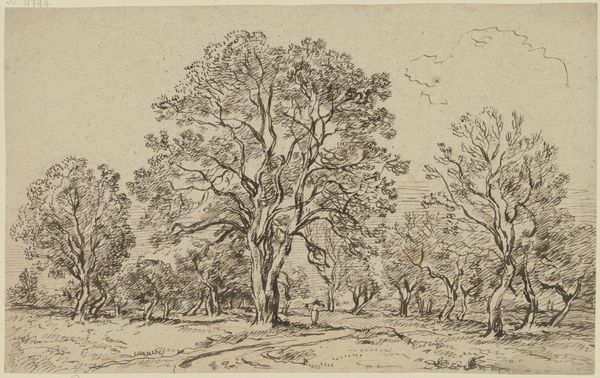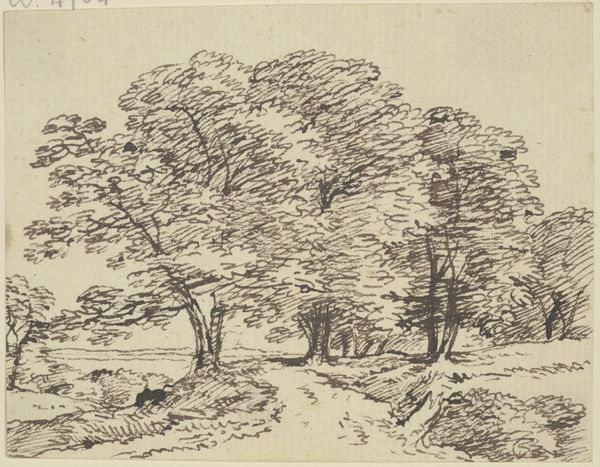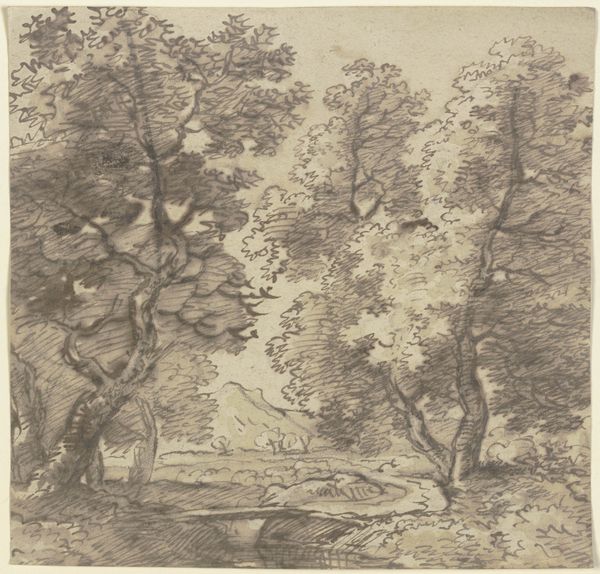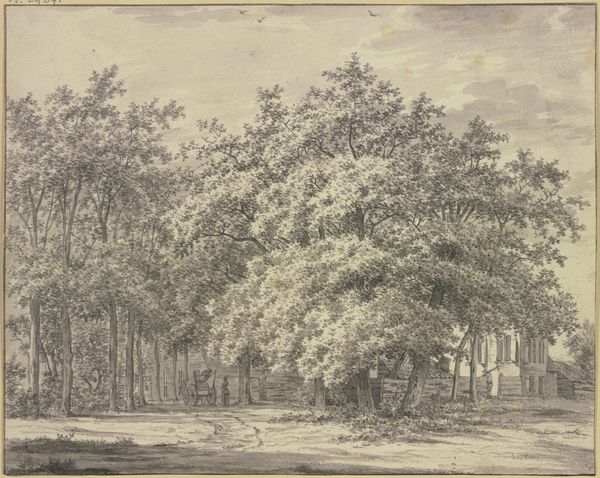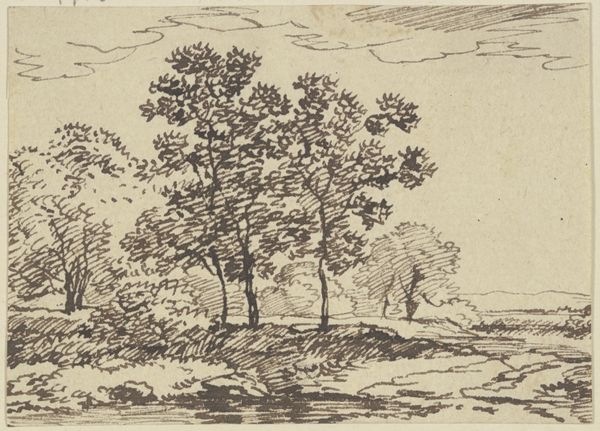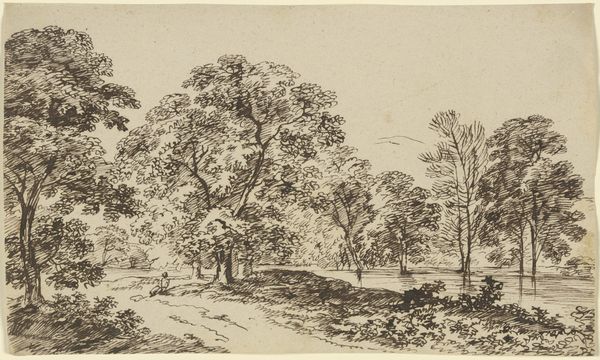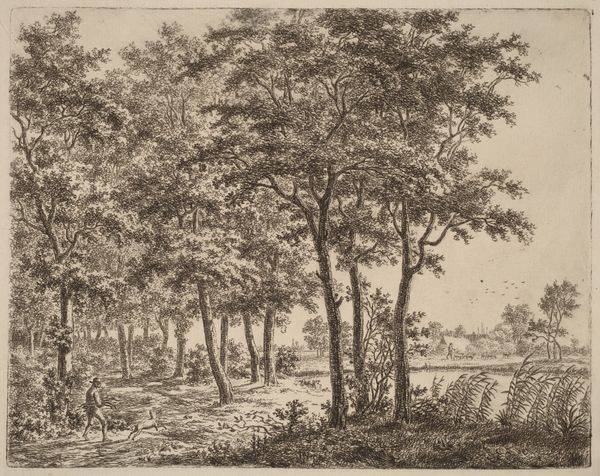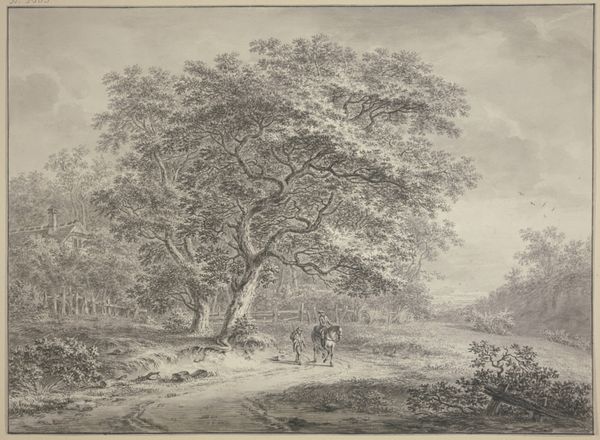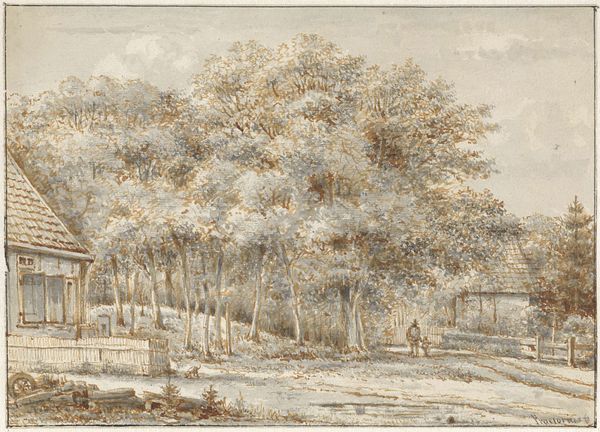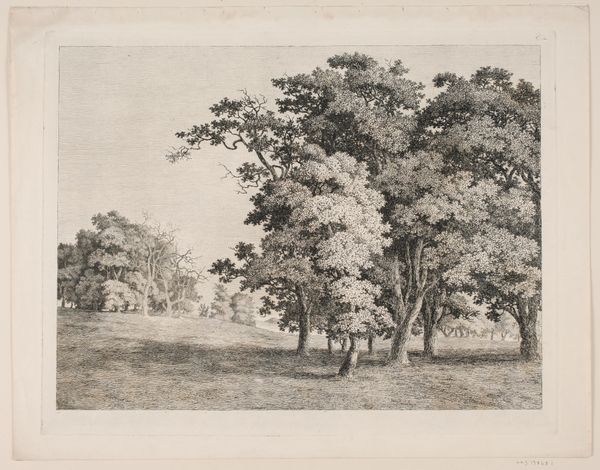
drawing, ink, pencil
#
drawing
#
16_19th-century
#
landscape
#
ink
#
pencil drawing
#
pencil
Copyright: Public Domain
Curator: Immediately, the atmosphere strikes me as quite dreamlike, almost melancholic with the soft washes and tones. Editor: You’re absolutely right. It’s titled “Baumpartie am Wasser mit Badenden im großen Garten zu Dresden,” which roughly translates to “Trees by the Water with Bathers in the large Garden of Dresden.” This piece is credited to Philipp Veith and rendered in pencil and ink. The drawing is currently part of the Städel Museum collection. Curator: So, Veith captured this landscape with figures, a few bathers and some cattle… The trees are incredibly imposing. What symbols do you find at work here? Editor: The bathing figures evoke ideas of cleansing, possibly rebirth, definitely a sense of pastoral tranquility, a return to a simpler time. This natural imagery acts in stark contrast to growing urbanization during this period. What did Veith seek to communicate, positioning his art within a societal context? Curator: It suggests an interesting counterpoint to the dominant artistic movements which gravitated toward representing industrial progress and technological advancement. Perhaps Veith offered, through this work, a gentle critique of rapid urbanization and a longing for simpler modes of existence that respected the harmony of people within a natural landscape. There’s a romantic ideal here. Editor: Yes, precisely, as seen through the soft gradations in the pencilwork which give depth and texture to the leaves and the water. A delicate balance indeed. Curator: Overall, analyzing how he situates nature alongside scenes of human activity underscores enduring social ideals in times of transformation. Editor: Definitely. It is this intricate combination that allows us to glean such nuanced appreciation from such a peaceful, reflective landscape.
Comments
No comments
Be the first to comment and join the conversation on the ultimate creative platform.


